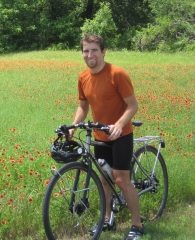Great Divide vs. Western Wildlands
Jul 19, 2019For 20+ years since its inception in 1997, the Great Divide was the undisputed king of long-distance bikepacking routes. Now there’s a challenger: the Western Wildlands Route. After riding both, here’s a take on them.





Similarities
The Great Divide and Western Wildlands are similar in many ways, including probably the most important factors: distance, climbing, and road surface.
According to the figures at Bikepacking.com, the Western Wildlands has more climbing, with 59,588 m, as opposed to 45,618 m on the Great Divide. Since the routes are essentially identical in distance, 4,345 km on the Western Wildlands and 4,339 km on the Great Divide, the Western Wildlands has both more total climbing and is equally ahead in terms of climbing mile-for-mile. Both routes have virtually no singletrack and instead almost exclusively use dirt roads, of comparable quality on either route. The Western Wildlands uses paved roads a little more often, roughly 20% of the time, compared to 10% on the Great Divide.
To put it succinctly, any bike would be equally suited to either route.
From experience, it didn’t feel as if the Western Wildlands was any more difficult than the Great Divide in terms of climbing, but that could be due to using a lighter bike and bikepacking setup on the Western Wildlands, rather than racks and panniers on the Great Divide. 25% more climbing makes a difference, but it’s on the same order of magnitude. The Great Divide shouldn’t be considered an “easier” option.
The overall terrain and geography is more similar than different. On both routes, expect a dry climate and lots of hills. Arizona and New Mexico both have a fair amount of both desert and alpine forest, Utah and Colorado both spend a lot of time at high elevation, and Idaho and Montana both have a lot of wooded hills. The northern end of both routes are one and the same, although the Great Divide extends farther north.
Differences
Since the Great Divide is a much older route, it’s more well-traveled. In 2016, I met over 100 cyclists riding the Great Divide, most of which were intending on riding the entire thing. While riding the Western Wildlands in its first summer after publication, I met exactly zero people riding the same route (I did meet a few people doing road bike tours). If you like solitude, you might prefer the Western Wildlands, but if you’d enjoy the companionship of fellow riders, the Great Divide is your route (at least for now).
For the same reason, the Great Divide has more available knowledge regarding places to stay, where to resupply, and so on. Adventure Cycling publishes maps of the route, including these types of details. BikepackingRoots.com has similar information on the Western Wildlands, in digital form, but it’s less complete and at times inaccurate. But here’s a big difference: BikepackingRoots makes this information available for free. A set of Great Divide maps from Adventure Cycling will set you back over $100.
While both routes are in remote areas, the Great Divide visits towns slightly more often. Riding through cities is annoying, but both routes almost exclusively deal in small towns. That makes this an advantage for the Great Divide, since resupplying is easier and can be done more frequently. Notably, you’ll visit a town with a bike shop much more often on the Great Divide.
One major difference: the Great Divide famously has a race, open to professionals and amateurs alike. Not only does the Western Wildlands have no such race, but people are actively discouraged from organizing an underground race of their own. If racing is your thing, do the Great Divide.
As mentioned before, the terrain is more alike than different. But overall, I enjoyed the scenery on the Western Wildlands more. I preferred Arizona to New Mexico due to more red rocks and dramatic landscapes. Colorado is more consistently pleasant than Utah, but Utah’s best parts are better than those of Colorado. Idaho and Montana are the best sections of either route, but Idaho has a slight edge due to the Route of the Hiawatha and Trail of the Coeur d’Alene.
The clincher: the Western Wildlands doesn’t include central Wyoming.
Like the terrain, the weather on either route is similar. Expect a lot of warmth and sunshine, though it often gets near freezing at night. The Great Divide appears to be a little wetter, especially in the north. That means more rain, but also means less worrying about finding enough drinking water. Both routes reach high elevation, so snow is a possibility, even in summer.
Ride the Great Divide if you:
- Like meeting people
- Want to have lots of info on the route
- Want to resupply more often
- Prefer slightly less climbing
- Want to be in a race
Ride the Western Wildlands if you:
- Prefer solitude
- Don’t want to pay $100+ for route info
- Want the best scenery (both are great, of course)
- Want a little less rain/snow
